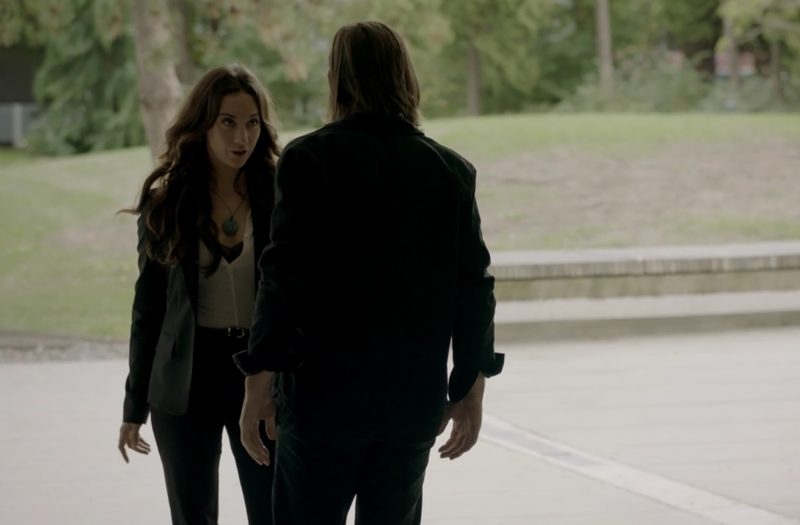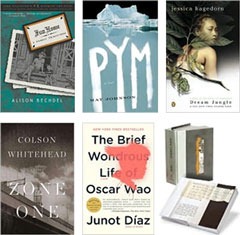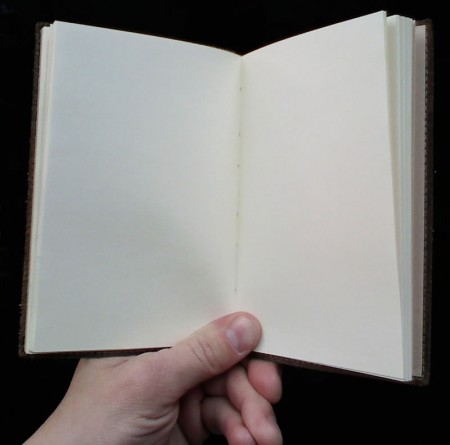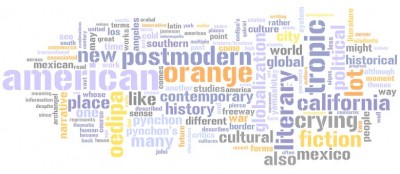November has been decreed National Novel Writing Month by some wise guy in California. The idea is that you have 30 days to write a 50,000 word novel. A noble endeavor to be sure, but one that seems doomed to not succeed on any satisfying level. I imagine it’s like running a marathon, but without the cheering crowd at the finish line. Or the fans handing out water bottles along the route. Or the actual route. And you probably don’t have running shoes either. Not to mention the earth has imploded and you’ve been sucked into an infinite abyss of unfathomable existential despair.
Sounds fun, right?
Back on November 1, the first day of National Novel Writing Month, one of my students who was participating in NaNoWriMo (the event’s official lovely, beckoning acronym) posted on Twitter that she was already stuck. As I am want to do in position of having written many novels in my head but never having put a single word to paper, I proceeded to post to Twitter a small piece of writerly advice (“If you’re stuck on your novel, the sudden appearance of a killer robot can really whip things into shape.”). I had such fun writing this tip that I began to post other mock suggestions to Twitter. I could not handle a 50,000 word novel, but I could manage, occasionally, 140-characters of satire. I ended up posting a least one tip every day, and often three or four tips. It’s probably the most sustained, laser-beam focused writing I’ve done in a long time, even if it was never more than 25 words at once.
Over 166,7000 writers signed up for NaNoWriMo, and while it’s too soon to say how many actually finished, I want to share here, in their entirety, all of my fake NaNoWriMo tips. In all but a few instances, these tips appear exactly as they did on Twitter (I removed the #NaNoWriMo hashtag on all of them and edited a few for clarity).
Some are funny. Some are very funny. Some are obviously trying too hard to be funny, and failing. But all of them, I like to think, hint at some underlying truth or untruth about the process of writing and publishing fiction, and of writing in general.
Please, take some time to read them, and vote for your favorite in the comments!
November 1, 2009
(1) If you’re stuck on your novel, the sudden appearance of a killer robot can really whip things into shape.
(2) Omniscient first person narration is woefully neglected. As are talking cars, pets, and buildings.
(3) You can always pad your word count by having a character in your novel rewrite Don Quixote word-for-word.
November 2, 2009
(4) Never underestimate the plot twists the sudden appearance of a lost identical twin can provide.
(5) End every chapter with a cliffhanger. Literally. End with characters dangling on a precipice. Preferably in the Alps.
(6) Take advantage of the symbolism of colors. For example, red means passion, danger, and the face of a drunken Irishman.
(7) Base your characters on instantly recognizable archetypes. Failing that, base them on the Baldwin Brothers.
(8) Falling behind on today’s word count? Each Elven Rune counts as an entire sentence! (You do have an Elf in your novel, right?)
November 3, 2009
(9) Introduce a Spanish Marquis and milk his name for word count: Don Carlos Jimenez Sanchez Sanchez y Lucientes de las Cabras.
(10) The arrival of a mysterious telegram works for all genres and time periods. Nothing spells intrigue in 1371 like Morse Code.
(11) Ayn Rand wrote “The Fountainhead” fueled by copious meth. But you, you should just stick to coffee and cigarettes.
(12) Sometimes a pipe is just a pipe. Other times, it can be a murder weapon. Be sure to clarify which it is for your reader.
November 4, 2009
(13) Writer’s Block? Introduce a character who speaks in tongues and then let your cat type for you. (Requires a cat.)
(14) Use a minute timer to stay focused on manageable goals. For example, give yourself 43,800 minutes to write 50,000 words.
(15) Great Art is the product of repression and oppression. So try to forget that time your cousin kissed you and get yourself arrested.
November 5, 2009
(16) Writing a western or romance? Having good guys in white and bad in black is a cliché. Make good guys ninjas and bad guys cannibals.
(17) Novelists should dress for success just like everyone else. Failing that, novelists should at least dress.
November 6, 2009
(18) The cursed monkey paw plot device has ruined many a novel. But man, when it works, IT WORKS.
(19) A pleasant work area is key to a writer’s success. Get Starbucks all to yourself by chasing everyone out with your farts.
November 7, 2009
(20) Add a note of elegance and sophistication to your novel by using British spelling, e.g. colour, honour, bloody arsehole.
(21) Don’t forget that if you run out of things to write about, you can write about how you’ve run out of things to write about.
(22) RT @wshspeare: Take advantage of the rich tradition of stealing other writers’ ideas and words when you run out of your own.
November 8, 2009
(23) “Write about what you know” is good advice, unless you’re OJ Simpson.
(24) Remember mystery novels can be set anywhere: horse tracks, babysitter clubs, monasteries, call centers, Sesame St., rectums.
(25) Sarcasm is difficult to pull off in a novel. Oh, but I’m sure YOU can do it.
(26) It’s never too early to start counting on that first royalty check. In fact, you should quit your day job, right now.
(27) Writing a spy novel? The enemy can’t be Russian, Arab, or Cuban anymore. You’re left with the Amish. Double Secret Amish.
(28) Writing about a brilliant professor who solves 1,000-year-old mysteries? This tip is for you. Why does my cat puke in my shoes?
November 9, 2009
(29) Tap into the avantgarde market. Publish your novel on Twitter. 50,000 words = 2,000 tweets. That’s only 67 tweets per day.
(30) Add tension by making the gender of your narrator indeterminate. This works for race too. And age. And number of nipples.
(31) Rehearse for your imminent book tour by showing up drunk at a Borders and telling everyone “I’m here to sign my books.”
(32) Your post-apocalyptic sci-fi novel is incomplete without at least one mention of T.G.I. Fridays. Chili’s will do in a pinch.
November 10, 2009
(33) If a latchhook needle shows up in chapter 1, you damn well better have a latchhook bath mat show up by the end of your novel.
(34) Is your book a triumph of human spirit or horrific descent into abjection? The former if you have elves. Clowns, the latter.
(35) Reenergize your writing by changing your workspace. Move out of your parents’ basement.
(36) Seek inspiration from the natural world, like gardens, flowers, butterflies, doves, and sulphurous pools of molten rock.
(37) The hero’s journey is a universal plot structure. So is Smokey and the Bandit. In either case, a redneck sheriff is crucial.
(38) An unresolved ending creates demand for a sequel. Smokey & the Bandit only whets our appetites for Smokey & the Bandit II.
November 11, 2009
(39) Good writers evoke the 5 senses. Great writers evoke the 6th Sense. Reveal at the end the protagonist was DEAD ALL ALONG.
(40) Remember to “show not tell.” This means your narrator should be mute, with x-ray vision. In other words, a supervillain.
(41) Already finished your 50,000 word novel? Get a head start on December’s National Totally Made Up Memoir Writing Month.
(42) If you are writing a Novel of Ideas, be sure to include either a misunderstood rebel or a talking bear. But please not both.
(43) If you haven’t already written in a xenophobic blowhard character, the likeness of Lou Dobbs is now available.
November 12, 2009
(44) Realism is all about details. For example, the USA never converted to the metric system. We measure chicken by the bucket.
(45) Know your audience. Are you writing for soccer moms, Nascar dads, or horny teenagers who fantasize about hunky vampires?
(46) Pacing is everything in a novel. If you’re not pacing round the room, you’re not suffering enough and don’t deserve to write.
(47) Remember the 4 types of conflicts that underlie all novels: Man v. Man, Man v. Nature, Man v. Himself, and Man v. MS Word.
(48) Use evocative metaphors. A good metaphor is like a, hell, I don’t know, it’s like a simile, I guess.
(49) Unreliable narrators are a big problem. Since we figured out that waterboarding doesn’t work, I suggest you just humor them.
(50) Comic novels are hard to write. But come on, you have it easy. Comic tweets are even harder.
November 13, 2009
(51) Don’t think about audience. You’re only writing for one person. His name is Frank J. Smalley and he comes from St. Louis.
(52) Love scenes are tricky to write, but necessary. A novel without a love scene is like a monkey without a rocketship.
(53) Love scenes may be tricky to write, but take it from one who knows, they’re even trickier to film, what with the lighting, the music, etc.
November 14, 2009
(54) Using dialect in a character’s dialogue isn’t politically correct. Unless it’s a Swedish chef. Swedish chefs are always allowed to sound like Swedish chefs.
(55) Sure, vampires and zombies are hot right now. But look to the future. The next big literary gimmick is giant land krakens.
(56) I don’t care what you may have heard, you cannot write a novel wrapped in a Snuggie, holding a cup of tea, a cat on your lap.
(57) Yes, Glenn Beck wore a slanket while writing his bestseller. But it’s technically not a novel, though it is fiction.
(58) If you go to a coffee shop to work on your novel, yes, you really have us all fooled that you’re there to write.
November 15, 2009
(59) The hero’s quest is a classic plot, most fully realized in the Harold & Kumar films. Seek inspiration from repeat viewings.
(60) November is halfway over, which must mean that every single novel being written anywhere in the world is now half finished.
(61) Remember, writers may have tax-deductible non-reimbursed job expenses: paper, coffee, NOS, prescription pills, therapy, etc.
(62) Those who can write novels, do. Those who can’t, tweet about it.
November 16, 2009
(63) Within every LOLCat meme lurks the backstory to a novel. Except Three Wolf Moon. That one is mine, bitch.
(64) Fan mail can be a huge distraction. Do what I do: hire an assistant who deals with everything but the naughty letters.
(65) Restraining orders can be especially burdensome during the research phase of your novel. You know what I’m talking about.
(66) Scandinavians are great literary innovators we could all learn something from. Case in point: glögg.
(67) The arc of the moral universe is long and it bends toward slutty vampire novels.
November 17, 2009
(68) Writing a novel where machines become self-aware and enslave humankind? Congratulations! That’s never been done. You rock.
(69) Only 20,000 words to go! Get cracking now on the longest car chase in the history of the novel.
(70) Download I Am D-Brown from the app store to autotune your novel.
(71) Inspiration from the muses is a myth. We all know creativity comes from randomly generated time-homogenous Markovian chains.
November 18, 2009
(72) 50,000 words is nothing. Shoot for 250,000 words. Write a novel that is Too Big To Fail.
(73) A character’s name can reveal his inner self. Consider examples from Dickens: Gradgrind, Murdstone, Wackford, Darth Vader.
(74) A tip for the aspiring horror author: Politics makes strange bedfellows. So does zombie erotica.
(75) Remember the 4 basic elements found in every great novel: setting, character, conflict, and goatse.
(76) The right title is crucial for your success. Stephen King’s “It” wouldn’t be the same with the title “Scary Killer Clown.”
November 19, 2009
(77) Tempted to use a nursery rhyme for the title of your thriller? We’ve all been there. Don’t do it. Stick with palindromes.
(78) Don’t tell your doctor about your writer’s block. Most insurance companies now count it as a pre-existing condition.
(79) Create suspense by ending each chapter mid-sente
November 20, 2009
(80) We’ve all heard about indie filmmakers maxing out their credit cards to make films. Feel free to max out yours this month.
(81) Writing a novel is about expressing yourself. That, and playing Freecell.
(82) Every picture tells a story, don’t it? Well, no. You’re not Rod Stewart, thank God, and it’s not 1971.
(83) Only 10 days left, and what? You still don’t have a pirate in your novel?? Heed the call of the scourge of the seven seas.
(84) Remember the Authors Guild ruling that you are legally obligated to include one ninja for every pirate in your novel.
November 21, 2009
(85) Hit a block in your writing? Uh, sorry. I got nothing.
(86) Remember the literal meaning of the word “novel”: An antiquated form of expression which discourages experimentation and originality.
November 22, 2009
(87) A writer once advised me, “Follow your obsession.” Of course, he had just finished a book on the breast in German literature.
(88) Bored by the challenge of writing a 50,000 word novel? Raise the bar by writing a 50,000 word PALINDROME.
November 23, 2009
(89) Look to Shakespeare for plot ideas, like the mad prince, the spurned lover, and the flesh-eating virus that devours Hoboken.
(90) Remember that the DEL button on your keyboard stands for deliverance. Press it often.
(91) The SYSRQ key is obviously the most essential button on your keyboard when you’re writing a novel. Its uses are endless.
(92) Of course, if you’re on a Mac, then you don’t have the SYSRQ key. This does not bode well for your novel.
November 24, 2009
(93) Very, very, very good writers use intensifiers really, really, really sparingly.
(94) The difference between a good novelist and a great one is measured in fluid ounces.
(95) The best novels start with a mysterious stranger coming to town. Like a gunfighter with a secret past. Or a killer monkey.
(96) Does your novel re-imagine the story of D.B. Cooper from the point of view of a bag of money? You win. The rest of us quit.
November 25, 2009
(97) Drink appropriately when you write: Beaujolais for a romance, martini for a spy novel, MGD for a working class hero, and Tang for scifi.
(98) Remember that the only holiday officially recognized by novelists is Administrative Assistants’ Day.
November 26, 2009
(99) Now that your novel is almost finished, start thinking about the trilogy. Standalone novels are for wusses.
November 27, 2009
(100) It’s too bad you weren’t up at 4am writing. I had a bunch of doorbuster NaNoWriMo tips, but they’re all gone now.
November 28, 2009
(101) Not sure how to end your 50,000 word masterpiece? Might I suggest a car crash? Or perhaps a train wreck? The Rapture is also good. All three FTW.
(102) Joss Whedon and J.J. Abrams are in a bidding war for the screen rights to your novel. Don’t give in. Hold out for Emmerich.
(103) Only on page 5 and 48 hours left? No problem. Wrap it up with a comet strike and have a 195 page index.
(104) Official NaNoWriMo guidelines say that novel titles count toward word count. The semicolon and colon are your friends.
November 29, 2009
(105) Acknowledgments don’t count toward your word count. Therefore, don’t waste your time thanking anybody but me.
November 30, 2009
(106) The Great American Novel MUST end with an epic kick-ass Boss Battle. Might I suggest giant ectoplasmic zombie robots?
(107) Studies show that most accidents happen within 5 pages from the conclusion. Safety first! Startling plot reversals later!
(108) If none of my tips / Have helped your book this dark fall / Write haikus instead.
(109) You’re bragging how you “wrote” a “novel” this month? Shut your pie-hole. Nora Roberts wrote FOUR, plus a made-for-TV movie.
(110) If you’re on the East Coast, 20 minutes to wrap it up. If you’re on the West Coast, well la-di-da. Your time is gonna come.
(111) I dare you to end your novel with an exclamation point. I dare you!
(112) A deathbed confession on the final page is all well and good, but nothing closes down the place like waking up from a dream.
(113) Edgar Allan Poe said it best: “All that we see or seem is but a dream within a dream. And to hell with Microsoft Word.”
(114) It’s ten till midnight. Do you know where your narrator is?
(115) Some novels, like grandma’s freezer-burned cookies from 1986, are best left unfinished.
(116) It is finished. My microwave popcorn, that is. Who the hell knows about your novel.
(117) Nevermore
Thanks for reading, and see you in March, when I’ll return with tips for National Coke and Vodka Rock Bottom Memoir Writing Month (NaCoVoRoBoMeWriMo)! In the meantime, look for me on Twitter.






